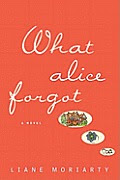
Meet Nick and Amy Dunne whose marriage is their most obsessive and dangerous passion. Their marital un-bliss is so destructive that it could undo George and Martha who burned up the pages of Edward Albee's Who's Afraid of Virginia Woolf? How did things get so bad? Gillian Flynn, whose award winning Dark Places and Sharp Objects also shone a dark light on dysfunctional characters, delves this time into what happens when two people marry and one spouse has no idea who their beloved really is. Life starts to unravel when Nick and Amy lose their jobs in New York and move to Carthage, Missouri to care for Nick's ailing Mom. One day Amy disappears and, because they always do, the police take a close look at the seemingly distraught husband. To peel away even one layer of what happens to Nick and Amy is giving too much away. Nick insists he had nothing to do with her disappearance even though he's a liar and a cheat. Someone may be setting him up, and as the investigation goes deeper, he's looking more and more like a murderer with a means and a motive. Flynn tells this dark story by alternating first-person accounts from Amy and Nick. Flynn manipulates the story-line of Gone Girl by releasing tidbits of information at the most opportune time, when the shock value is at its highest. The plot is mind-blowing; while the book has many twists, there is one huge one that will leave you aghast. It is a wonderful psychological thriller.







